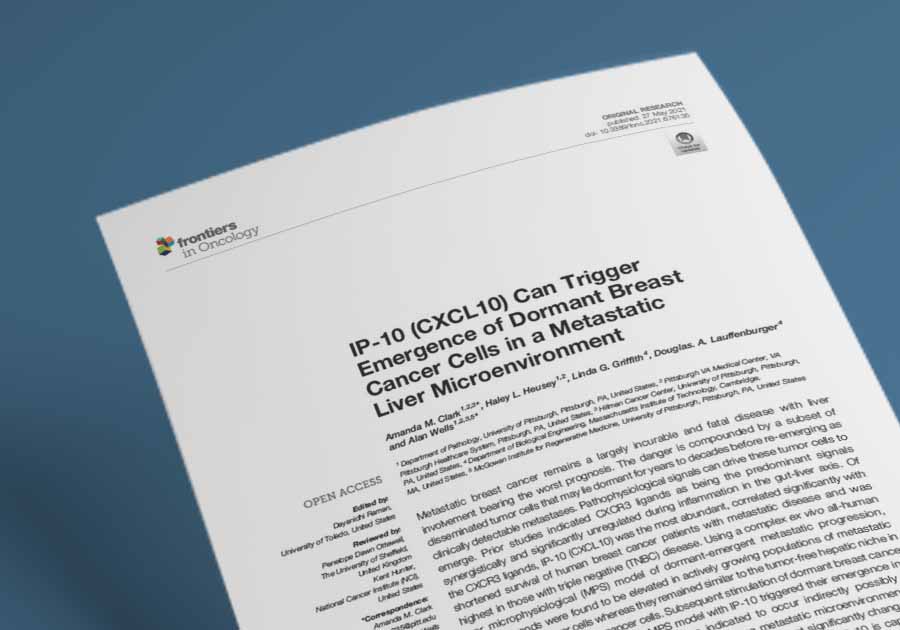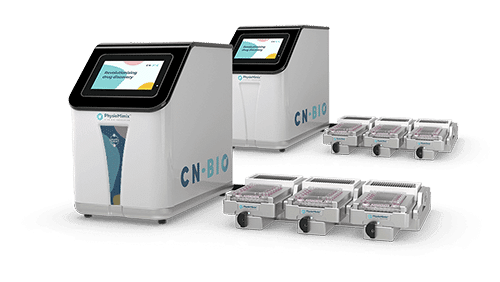Scientific publications

β2-spectrin (SPTBN1) as a therapeutic target for diet-induced liver disease and preventing cancer development
Rao et al., 2021
This study shows the effect of the presence of β2-spectrin (SPTBN1) in the promotion of sterol regulatory element (SRE)–binding protein (SREBP)–stimulated lipogenesis. These findings suggest SPTBN1 could be a potential target for a therapeutic against NASH and liver cancer.
Scientific publications

IP-10 (CXCL10) Can Trigger Emergence of Dormant Breast Cancer Cells in a Metastatic Liver Microenvironment
Clark et al., 2021
This study elucidated using our MPS platform that CXCR3 ligands were elevated in growing populations of metastatic cancer cells while remaining at physiological levels in the dormant cancer cell site. Upon stimulation with IP-10, dormant cancer cells resulted in a dose-dependent emergence with the metastatic environment playing a significant role.
Webinars

A Microphysiological Model of Metastatic Progression
Using systems to model metastatic progression
In this webinar, Dr Amanda Clark, University of Pittsburgh, discusses how to use a Liver MPS to model metastatic progression, evaluate therapeutics and improve our understanding of the bidirectional crosstalk that occurs between host tissue cells and metastatic cancer cells.

